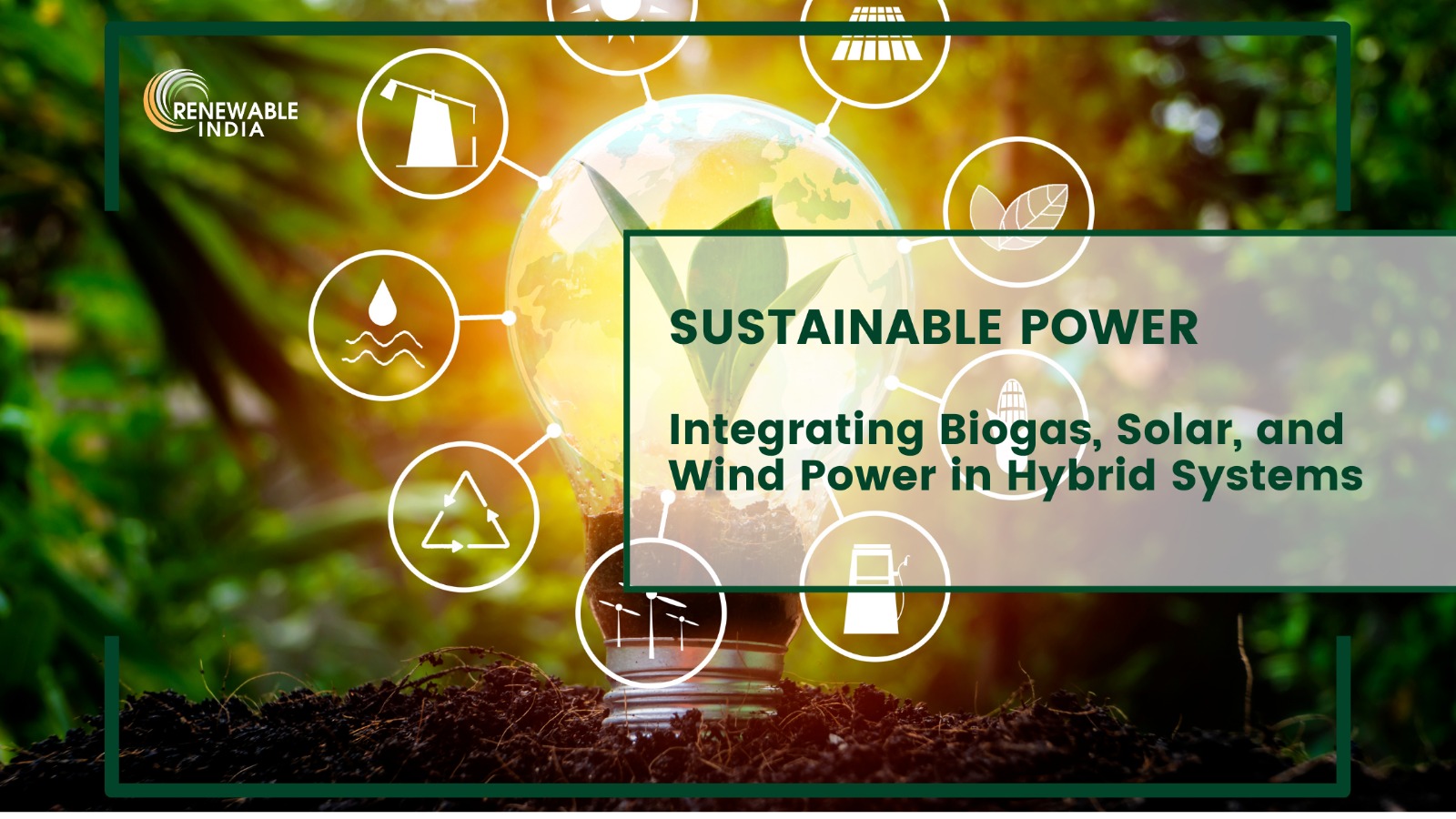
In modern times, the key to development lies in economic growth. However, such growth is largely facilitated by manufacturing goods and services. Every economic sector strives to produce enough to meet the population’s growing demands. In short, striking a balance between demand and supply keeps the wheel of the economy moving.
The production relies heavily on power. Since time immemorial, humans have primarily used various conventional energy sources to sustain themselves. However, given the diminishing conventional energy systems due to overuse, we have been forced to look for alternatives to fill the gap.
Dependence on renewable sources of energy increased since the last century. However, its full potential could not be realised due to seasonal and environmental variations. Hence, the answer to this pressing problem is hybrid energy systems.
A Hybrid Energy System, which integrates two dissimilar power-generating technologies to generate a reliable and uninterrupted power supply, is often looked upon as a promising solution to address the ever-increasing energy demands of Indians.
India is one of the few countries in the world which gets nearly 330 annual solar days. Naturally, our country abounds in solar energy. In such a scenario, we must look for ways and means to harness this unconventional source of energy to our benefit.
Solar energy or solar photovoltaic can be efficiently used as a primary energy source/technology to produce bio-fuel or biogas. It plays a pivotal role in reducing carbon emissions as it does not emit as many harmful pollutants in the atmosphere as done by non-renewable sources of energy. The implementation of bio-gas with solar PV hybrid systems is particularly feasible in households with 3-6 cattle. (Source:https://www.sciencedirect.com/science/article/abs/pii/S2213138821000606).
In a hybrid system, solar thermal energy can be combined with other renewable energy sources, such as cow dung biogas and kinetic energy, for a more reliable and efficient energy supply.
(Source:https://www.sciencedirect.com/science/article/pii/S2666123323000909
#:~:text=In%20a%20hybrid%20system%2C%20solar,and%20water%20heating%20in%20buildings).
Solar energy can be integrated with biogas in a few ways, such as by installing- Solar thermal biogas plants, hybrid solar-biogas systems: Solar collectors and heat exchangers.
(Source:https://www.google.com/search?q=how+can+solar+enrgy+energy+cn+be+integrated+with+bio-+gas&sca_esv)
Like solar energy, India also has an abundance of wind energy The coastal and desert areas of the country produce the much-needed wind energy in India. It may be used as a principal source of producing sustainable energy solutions like biogas.
Wind energy and biogas can be integrated by using biogas to supplement wind power when the wind is not strong enough. This can be done by storing biogas and burning it in an engine to produce electricity. (Source https://www.google.com/search?q=how+wind+energy+cn+be+integrated+with+bio-+gas&sca).
The integration of bio-gas with wind energy proves beneficial as less wind power is used to heat the bio-gas pool to raise and keep the fermentation temperature. The remaining wind power combined with bio-gas power is directly supplied to users. (Source: https://ieeexplore.ieee.org/document/5335796).
(i) The hybrid of solar photovoltaic and wind energy with bio-gas helps in mitigating environmental hazards by reducing dependence on energy harnessed from conventional sources like fossil fuels.
(ii) It supplies electricity to rural and remote areas thereby enabling the dwellers to improve their quality of life and boost economic activities.
(iii) The system could be employed to provide a long-term backup solution in the event of a power cut.
(iv) It is more reliable as it is unaffected by grid failures or shutdowns, thereby facilitating uninterrupted power supply.
(i) The hybrid of bio-gas with solar and wind energy, is marked by challenges at the operational stage. The high cost of solar photovoltaics often acts as a bottleneck.
(ii) Installing wind turbines comes across as a costly venture.
(iii) Additionally, the emission of harmful effluents from bio-gas plants poses a severe threat to the system.
It is important to note that despite the limitations of hybrid energy systems using bio-gas in tandem with wind and solar power, bio-energy is potent to make a dual contribution; first by eliminating methane emissions from organic sources and second, by substituting fossil fuel resources. Biogas, when used in conjunction can help to stabilise energy supply from intermittent renewable technologies like solar and wind. Biogas would contribute to several sustainable development goals in rural areas through local employment generation, enhanced forestation, access to clean and low-cost energy, health benefits and enhanced energy security.
(Source:https://www.sciencedirect.com/science/article/abs/pii/S0960148119304549)
Leave a Reply